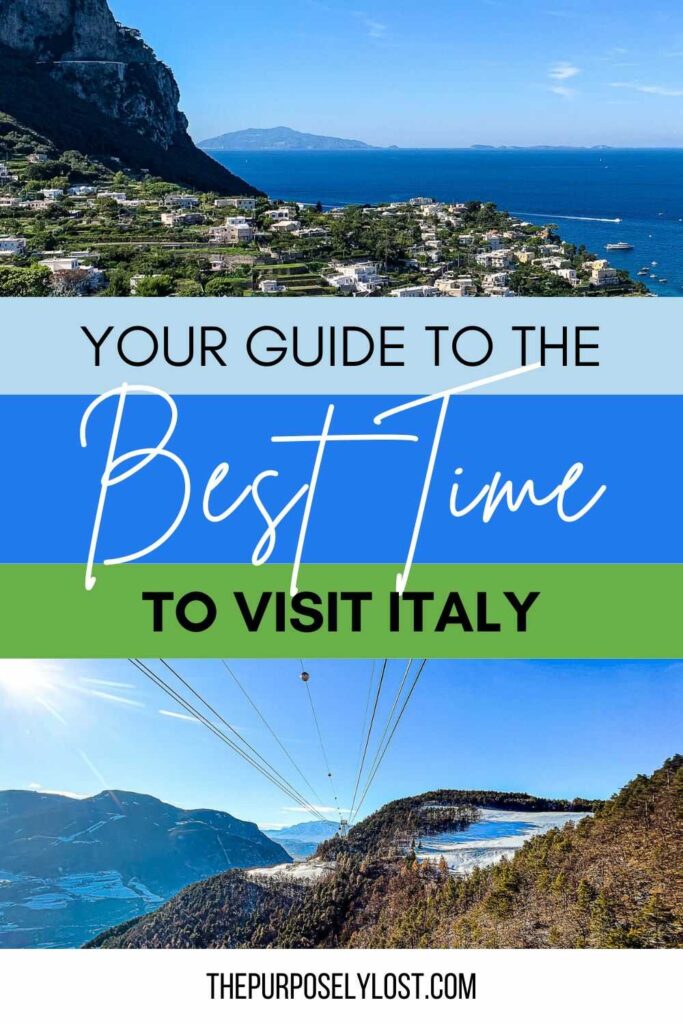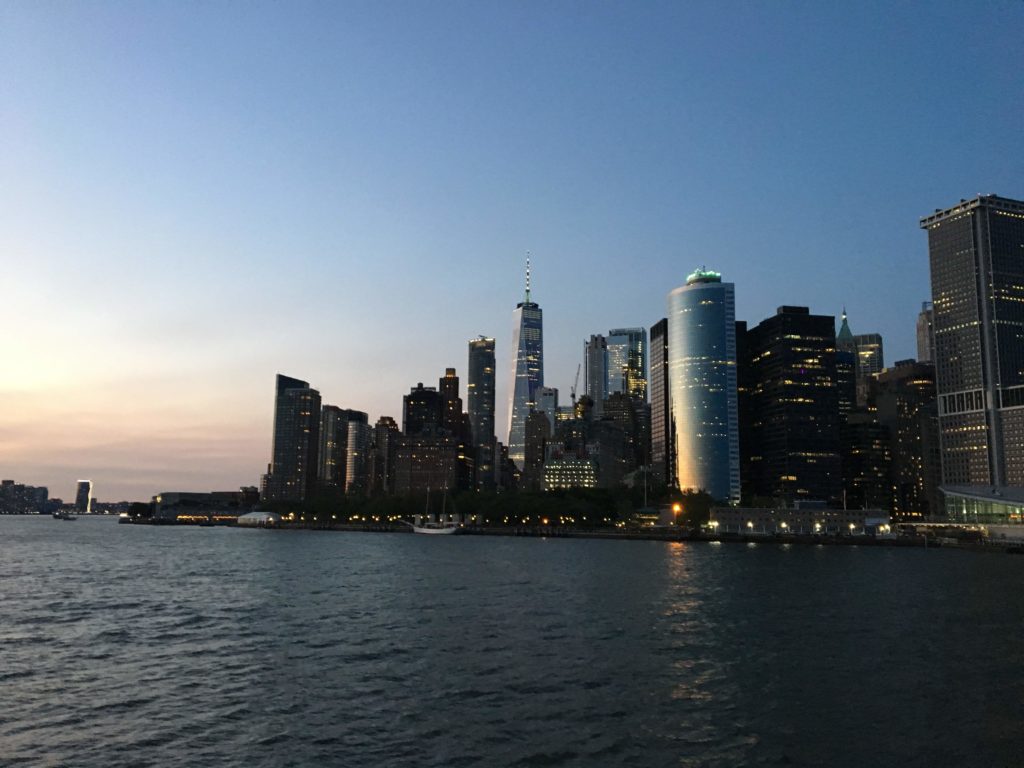Contents
- 1 Overall Best Time To Visit Italy
- 1.1 Best Time To Visit Italy To Avoid Crowds
- 1.2 Best Time To Visit Italy For The Beach
- 1.3 Best Time To Visit Italy For Sightseeing
- 1.4 Best Time To Visit Italy For Ski Season
- 1.5 Best Time to Visit Italy for Shopping
- 1.6 Best Time to Visit Italy for Wine Enthusiasts
- 1.7 Cheapest Time to Visit Italy
- 1.8 Most Expensive Time to Visit Italy
- 2 Best Time To Visit Italy: Month To Month
- 3 Best Time To Visit Italy’s Top Cities
- 4 Weather in Italy
- 5 Visiting Italy: FAQs
- 6 Why Visit Italy?
- 7 Best Time To Visit Italy: Wrap-Up
This post may contain affiliate links! I will receive a commission, at no extra cost to you, if you purchase something recommended here.
When is the best time to visit Italy?
With its stunning architecture, delicious cuisine, and vibrant culture, Italy is an incredible destination no matter what time of year you go.
But depending on your interests and budget, certain months may be better than others.
As an American expat in Italy, I’ve experienced life and tourism throughout the country every month of the year.
This means I can give you a true month-by-month breakdown of what it’s like visiting Italy at any time of the year.
From the popular cities of Rome and Milan to the picturesque Amalfi Coast, get ready to explore one of the world’s most beautiful countries–it’s time to plan your trip to Italy!
Overall Best Time To Visit Italy
The best time to visit Italy overall is during the shoulder seasons.
Between April and June or September and October, you’ll find the temperature is still warm. But, the tourist crowds are smaller, and long-awaited food & wine festivals are in full swing.
However, the best time to visit Italy depends on your preferences.
Best Time To Visit Italy To Avoid Crowds
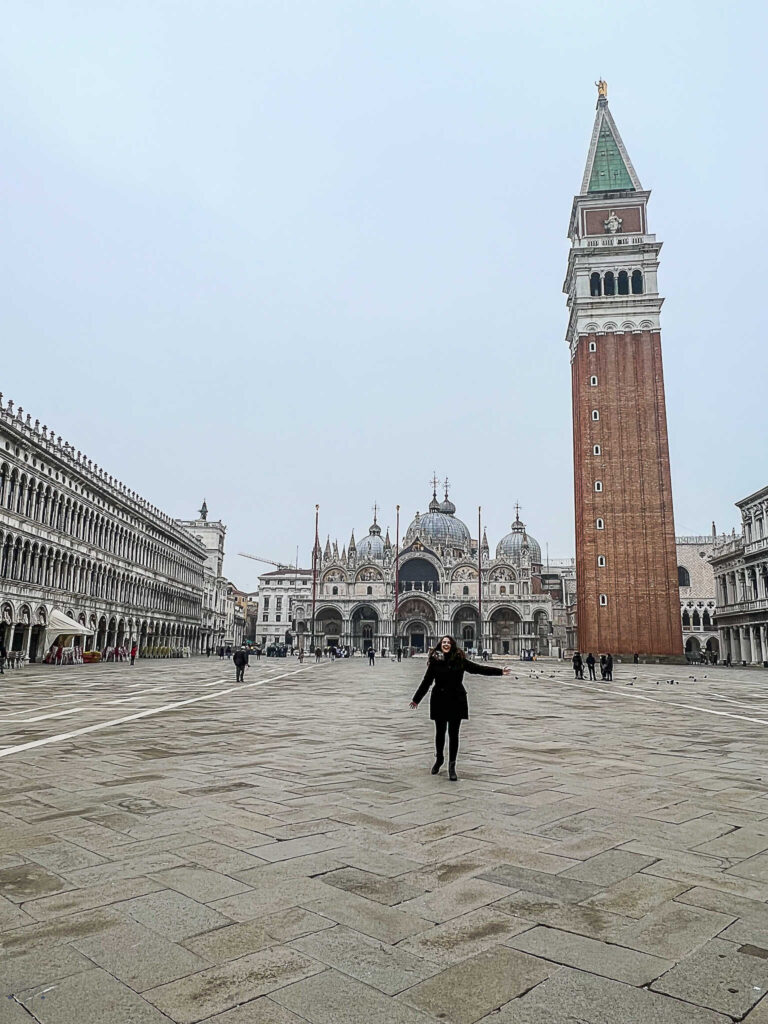
It’s crucial to consider peak times, special events, and holidays when planning a trip to Italy.
For example, Easter is one of the busiest times of year in Italy, with large crowds gathering at religious sites throughout the country.
Similarly, Christmas celebrations draw a large number of visitors during December.
And, of course, once summer comes, Italy is a major destination for tourists.
If you’re looking to avoid masses of tourists, the best time to visit Italy is during the fall months.
During this time, many tourist attractions are less crowded than during the summer tourism rush, and prices are lower than they will be during the Christmas season.
It gives you the unique opportunity to experience some of Italy’s gorgeous cities in a quieter atmosphere.
Best Time To Visit Italy For The Beach

If you’re looking to soak up some sun on one of Italy’s stunning beaches, the summer months of June through August are perfect.
Temperatures are warm, popular beach destinations are bustling with activity, and many coastal towns host festivals and spectacular events throughout the summer months.
However, prices may be higher during this time due to the influx of tourists.
Best Time To Visit Italy For Sightseeing

If you’re looking to explore Italy’s many historical sites and attractions, the best time to visit Italy is during the spring months of March through May.
It’s ideal weather with moderate temperatures, increasing daylight hours, and less crowded attractions.
And you can see these timeless cities and botanical gardens in full bloom!
Best Time To Visit Italy For Ski Season

If you’re interested in hitting the slopes, you must come during the frigid winter months of December through February.
Once the snow starts falling in Italy, the country has phenomenal ski resorts up in the Dolomites and the Alps.
But remember, some historic attractions close during the winter season due to the cold or inclement weather.
Best Time to Visit Italy for Shopping

Shopping in Italy is a fun experience, especially during the winter and summer sales.
Winter sales start in early January and run until mid-February, while summer sales take place around July and August.
During these times, shoppers can find great deals on retail items, from luxury goods to everyday clothing.
Italy is well known for its fashion and shopping, so it’s no surprise that end-of-season sales offer great bargains.
Whether you’re looking for designer clothes or just want to pick up some souvenirs, winter and summer sales are the best time to shop in Italy.
Best Time to Visit Italy for Wine Enthusiasts

For a one-of-a-kind experience, September and October are the best times to visit Italy’s wine regions.
During this time, the vineyards are humming with the harvest season.
Winery tours can be booked in advance if you want to get a closer look at the process of harvesting grapes and making wine.
Fall is also a great time to visit wineries in Italy as it is relatively quiet compared to other seasons.
Remember to make reservations in advance if there are any specific vineyards you want to visit.
Cheapest Time to Visit Italy

The best time to visit Italy on a budget is during January or November.
Flights, hotels, and rental cars are usually deeply discounted during these months.
This makes it easier for travelers to find affordable accommodations and activities that fit within their budget.
It’s important to note that both of these months may have shorter hours of daylight due to the shorter days of wintertime in Italy.
Despite this, they are still great times to visit if you’re looking for a budget-friendly trip to Italy.
Most Expensive Time to Visit Italy

The most expensive time to visit Italy is during the summer months of June, July, and August.
This is when the country experiences its peak tourist season due to the warmer weather and longer days.
During this time, flights, hotels, and rental cars are usually more expensive than at other times of the year, and attractions are also more crowded–so it’s a great time to travel in Italy without a car to save on that expense.
If you’re looking for a more affordable trip to Italy, it’s best to avoid these months.
Best Time To Visit Italy: Month To Month
Since I’ve lived and explored Italy during every month of the year, let’s break down the country’s tourism culture and climate conditions month by month.
January


If you’re looking for a winter getaway, Italy is an ideal destination in January.
The temperatures are cold, and crowds are much smaller than during the summer months.
If you’re visiting Venice during this winter month, you can see unique festivals like Regatta delle Befane and the Torre dell’Orologio procession on the Epiphany.
January is also an excellent month for skiing and other winter sports in the northern mountain regions.
February


February is a great time to visit Italy if you’re looking for unique cultural experiences.
The winter temperatures are still cool, making it a great time for skiing in the Alps and Dolomites, as well as exploring local culture and traditions.
Due to Carnevale, the period before Lent begins on the Catholic calendar, many Italian cities and towns host monthly festivals.
Venice is one of the most famous cities to celebrate Carnevale, along with Viareggio in Tuscany and Putignano in Puglia.
March

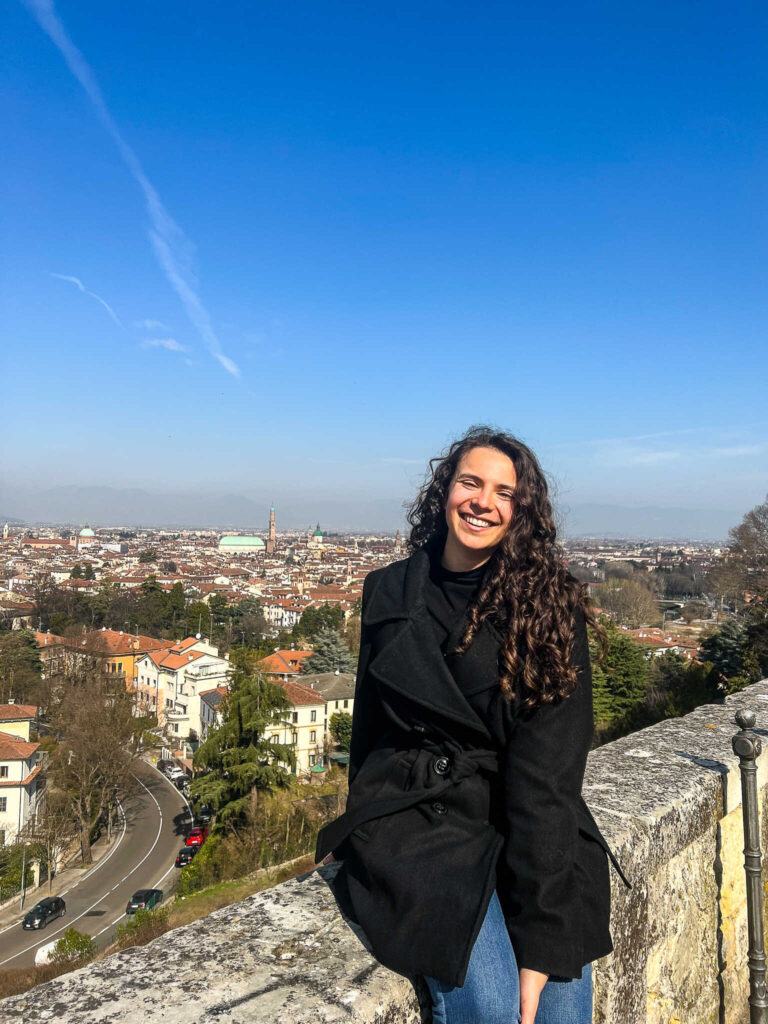
In March, the weather is perfect for sightseeing and exploring without the heat and crowds associated with the peak summer months.
After months of cold weather, we begin the gradual growth of warmer days, starting in the south.
With its mild temperatures and smaller crowds, March is one of the best times to visit Italy for a truly unforgettable experience.
April

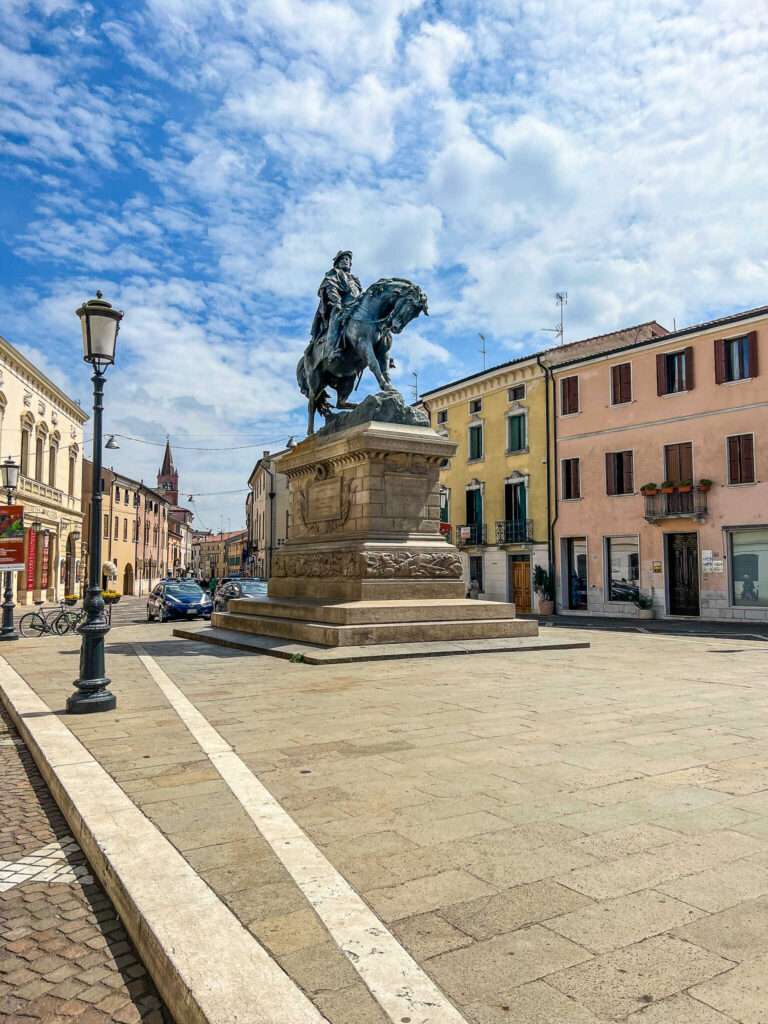
Although Italy is a great place to visit any time of year, April is an exceptional time to visit.
While the north of Italy still has slightly cooler weather, the south is warmer, making this month a great time to explore the whole country.
The days are getting longer, and flowers are starting to bloom, making it a fantastic time to explore Italy’s many botanical gardens and parks, like the Orto Botanico di Padova, one of the world’s oldest botanical gardens in Padua, Italy.
May


The rolling hills of the Italian countryside blooming with the bright colors of spring flowers are a beautiful sight to behold in the month of May.
It’s the perfect time to explore the country’s major cities like Rome, Florence, and Venice, as the temperatures are comfortable, and the heat is not too oppressive.
It’s less crowded than it will be over the next few months.
Beach towns on the Mediterranean Sea on Amalfi Coast, Sardinia, and Sicily, as well as those on the Adriatic Sea in Puglia, are also great places to visit, as the water is warm enough for swimming.
The mild weather also makes it an appealing time for cycling, hiking, and other outdoor activities.
June


June ushers in the start of the summer tourist season.
Temperatures are warm but not too hot, and days are typically sunny.
Coastal areas of Italy, like the Amalfi Coast, Puglia, and Sicily, are a fantastic choice for beach-goers and those looking to enjoy the warmest temperatures and the most sunshine.
Other popular areas to visit in June include the Eternal City of Rome for the Festa della Repubblica, the bustling city of Milan, and the rolling hills of Tuscany.
Shopping and sightseeing are also popular in June, with many markets, shops, and historical sites to explore.
July
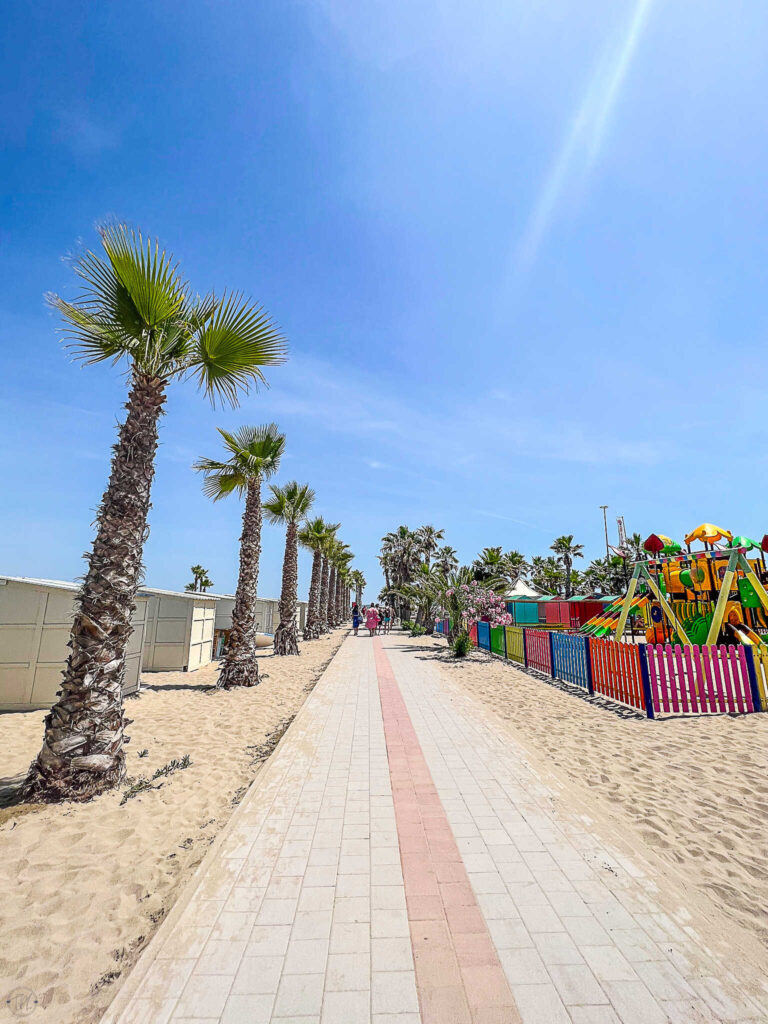
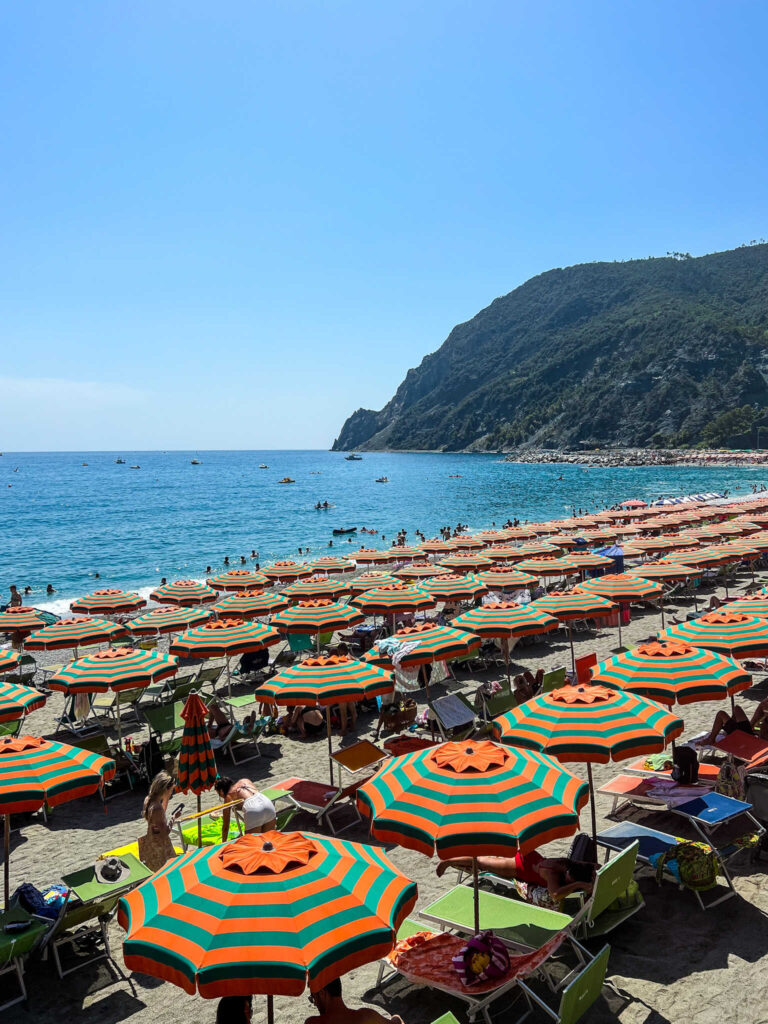
Visiting Italy in July is a great way to explore its diverse culture, natural beauty, and rich history.
As the country experiences its hot summer months, the days are long, the sun is shining, and the cities are bustling with life.
July is also the peak time for Italy’s many festivals and cultural events.
While visiting the ancient cities of Rome, Florence, and Venice is an unforgettable experience, attending the local festivals and events throughout the month makes them even more special.
If you’re looking for a beach vacation, the Amalfi Coast and the islands of Sicily and Sardinia are great choices.
August


August marks a significant month for Italians.
The annual national holiday Ferragosto dates back to the Roman emperor Augustus, who decreed August 1st as Feriae Augusti, a day of rest.
Modern-day Italians now celebrate the entire month of August as a holiday.
Although some corporate businesses stay working, many shops and restaurants operate on limited hours or are closed from a few weeks to the whole month.
Since Ferragosto now refers to the religious holiday the Assumption of Mary (a Catholic holy day) on August 15th, the date itself is marked with annual celebrations, festivals, and fireworks.
Additionally, August is the popular time to take advantage of Italy’s discount shopping season, allowing visitors to take advantage of reduced prices on designer items.
September


In my opinion, September is the best time to visit Italy.
The temperatures are still warm, and the days are still long, but the summer crowds have dissipated.
As the height of summer fades, world-famous art, history, wine, and culinary festivals are happening all around the country.
From the beaches of the Mediterranean to the beauty of the Alps, a trip to Italy in September will be an unforgettable experience.
October

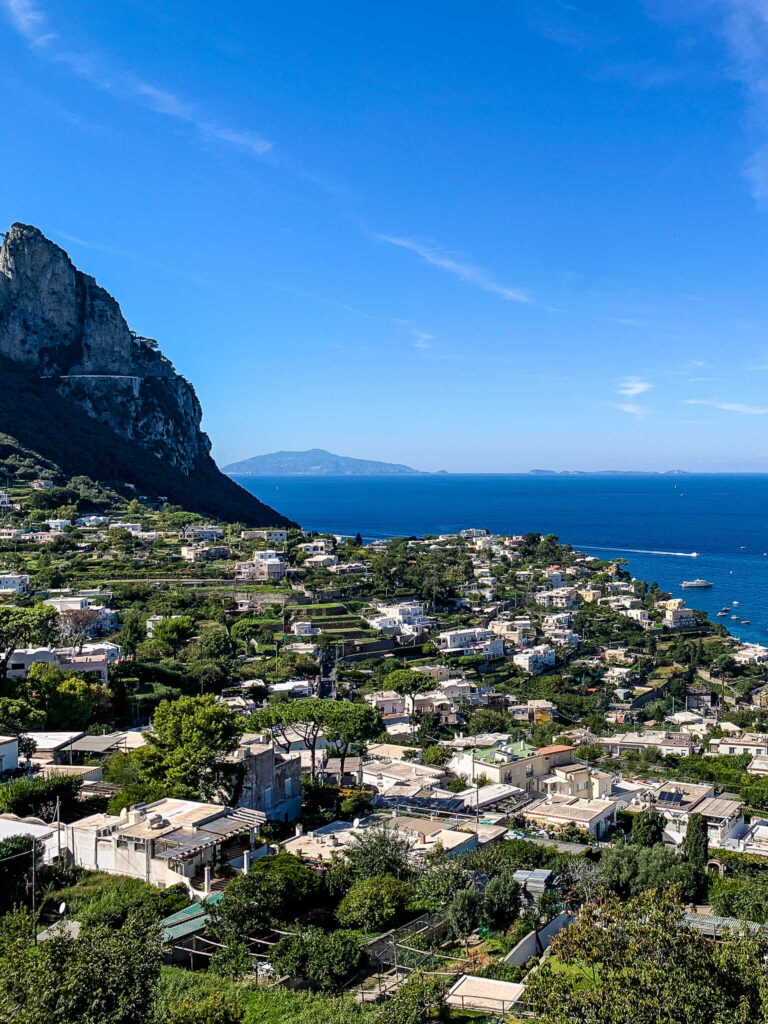
Italy is an excellent destination to visit during autumn, and October is an outstanding time to take in the country’s vibrant culture and lively fall festivals.
The countryside is blazing with the oranges and yellows of the olive and grape harvests.
And although the days are getting a little shorter and the temperatures are dropping in the north, the south is still enjoying the warm, late summer.
I highly recommend you visit southern regions like Campania, Basilicata, Calabria, Apulia, and Sicily this month.
November

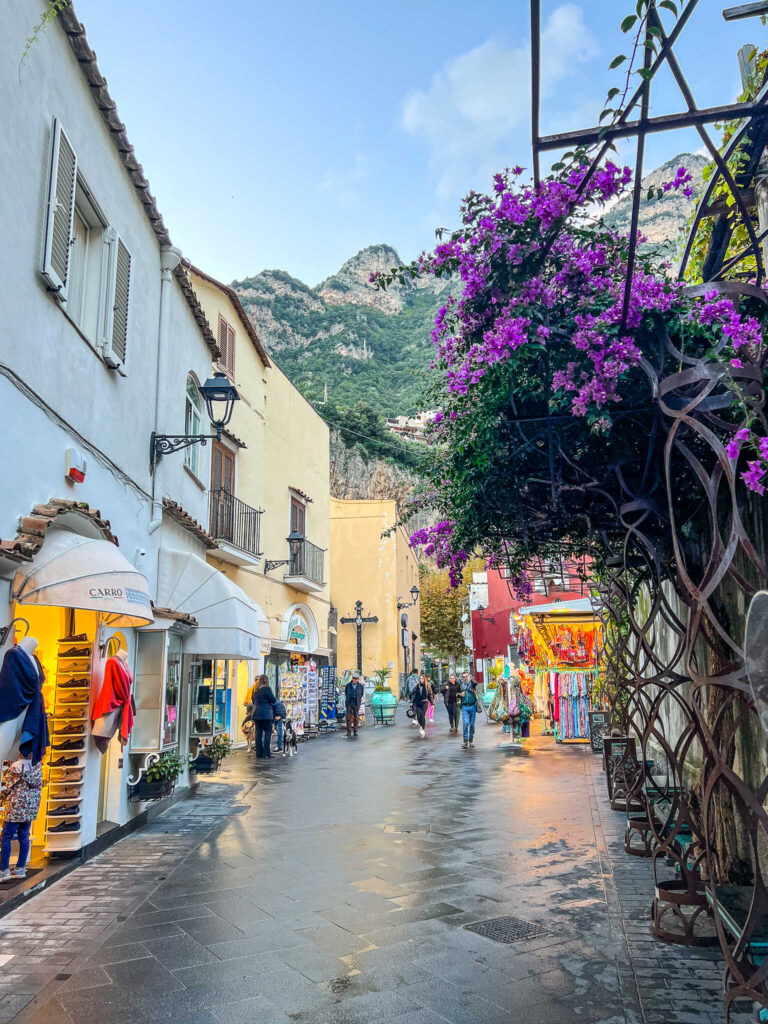
As fall continues, November is an interesting time to visit Italy.
Although the days are getting shorter, the weather is still reasonably mild in south and central Italy. And with a lull in tourism, it makes for a pleasant and unhurried experience.
The month in Venice marks the beginning of acqua alta season when the Lagoon water levels rise and flood the historic city’s streets.
However, in towns on the Amalfi Coast, many businesses close for an opportunity to take a few weeks off in November between the end of the peak tourism season and the start of the holiday rush.
December


During December, you can experience the holiday spirit of Christmas and New Year all throughout Italy.
From the Bolzano Christmas market to the Christmas celebrations at the Vatican, Italy is a beautiful place to enjoy some festive cheer.
In addition to the country’s festive holiday flare, those looking for a winter wonderland should head to the northern regions, where snow-capped peaks provide the perfect backdrop for skiing, snowboarding, and other winter sports.
Best Time To Visit Italy’s Top Cities
Overall, the best time to visit any of Italy’s most famous cities for pleasant weather is during the shoulder seasons of the summer rush–Spring and Fall.
However, since each city is different, some have their own memorable times to visit!
Best Time For Rome

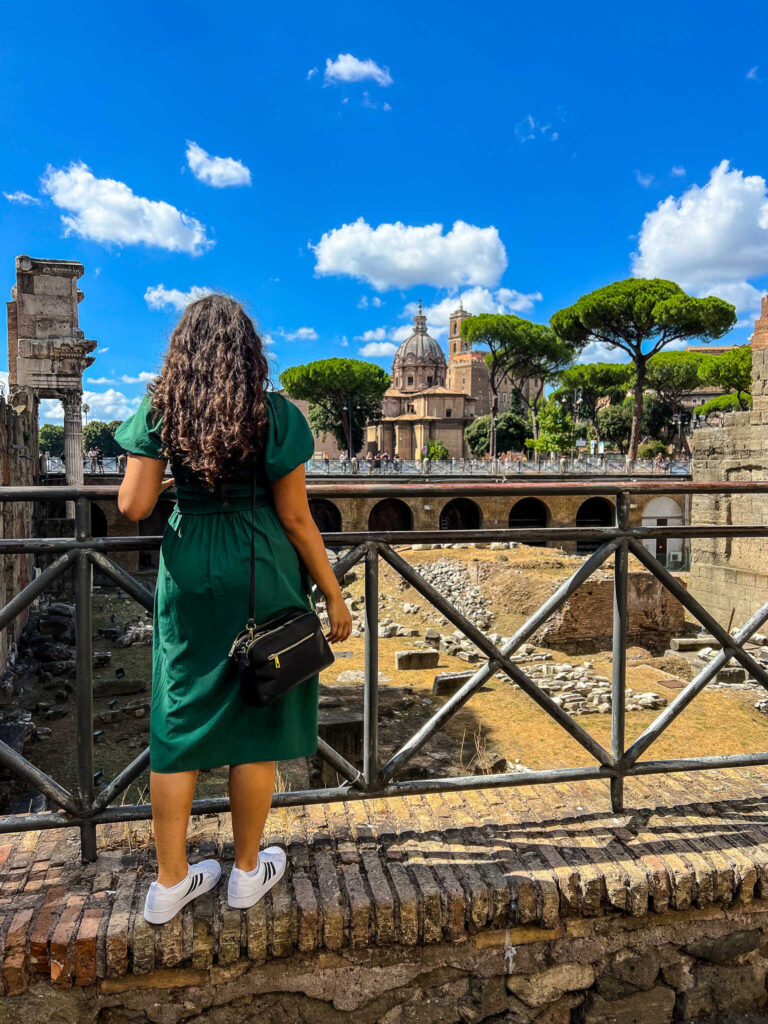
With mild temperatures throughout most of the year, there really isn’t a bad season for sightseeing in Rome.
However, the best time to visit is spring and fall.
From March to May and September to November, temperatures are mild and comfortable, making it ideal for quiet sightseeing, and there’s less tourism than during the height of summer.
With its many open-air ancient monuments, outdoor dining, and outside festivals, plays, and concerts, Rome truly comes alive during this ideal season.
Best Time For Venice
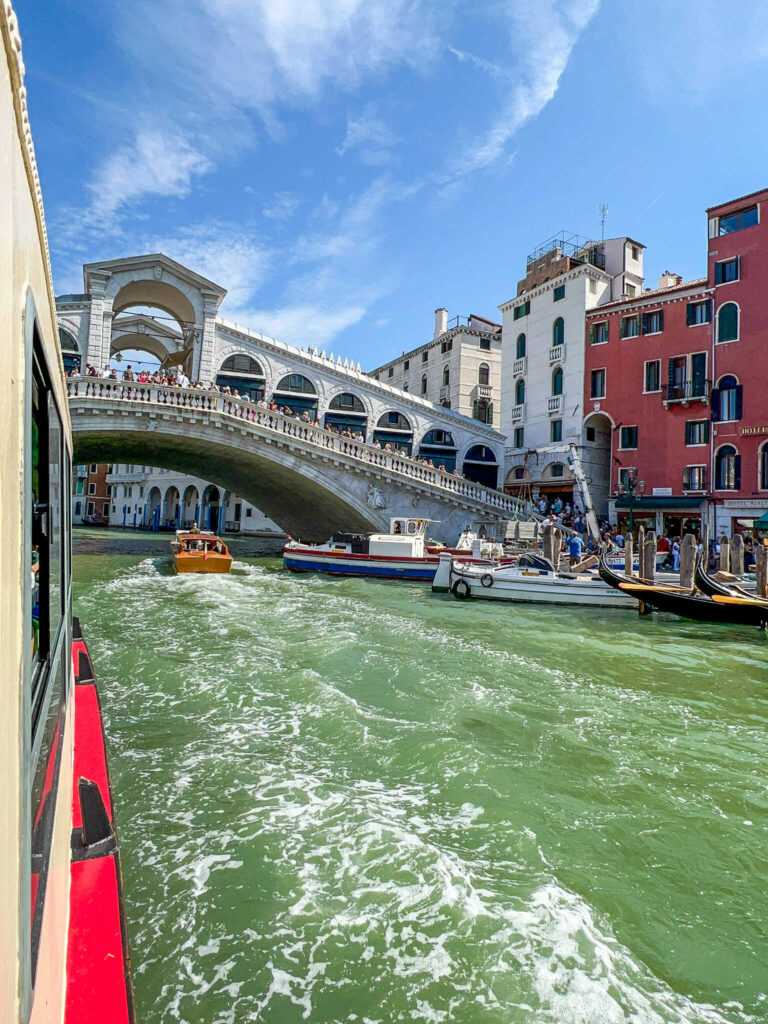
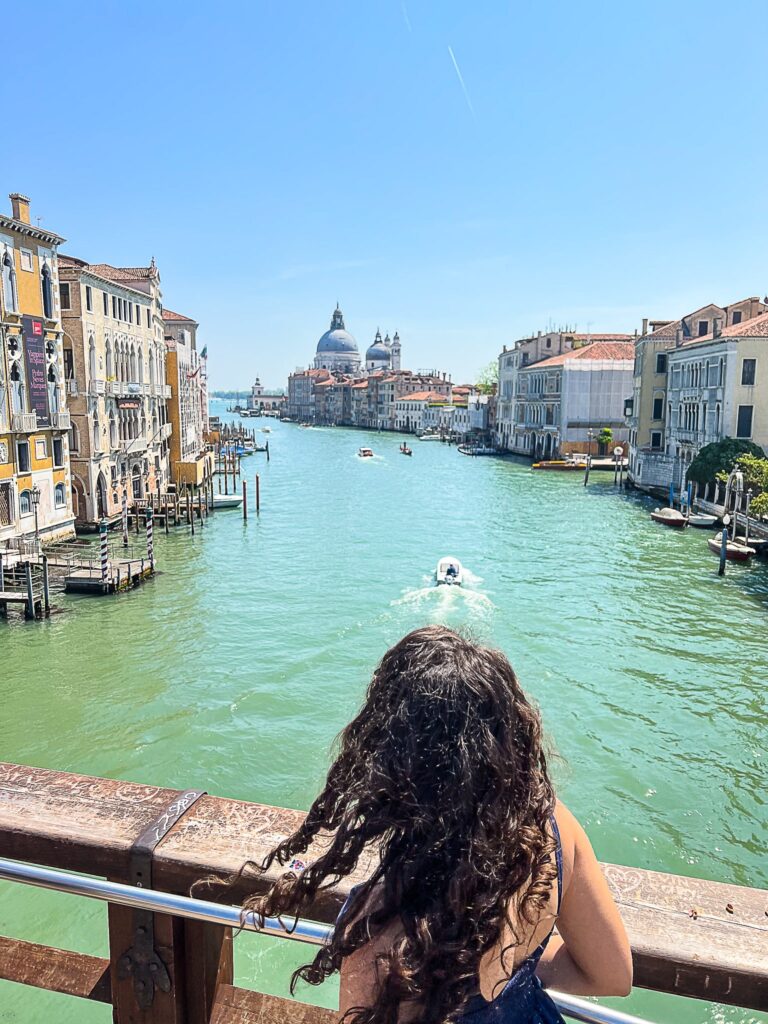
Venice, Italy, is a destination like none other–especially during April, May, September, and October.
The temperatures during these months are moderate, the days are getting longer, and the city’s flowers are in full bloom, making it the perfect season for sightseeing.
However, the best month to visit Venice with fewer crowds is January, as the city experiences a lull in tourism from the end of the holiday season until the beginning of Carnevale.
Hotel prices are also more affordable during the winter season, allowing visitors to experience most of the city without breaking the bank.
And you’ll have the incredible opportunity to explore this beautiful city’s historic canals, churches, and piazzas without feeling overwhelmed.
Best Time For Florence

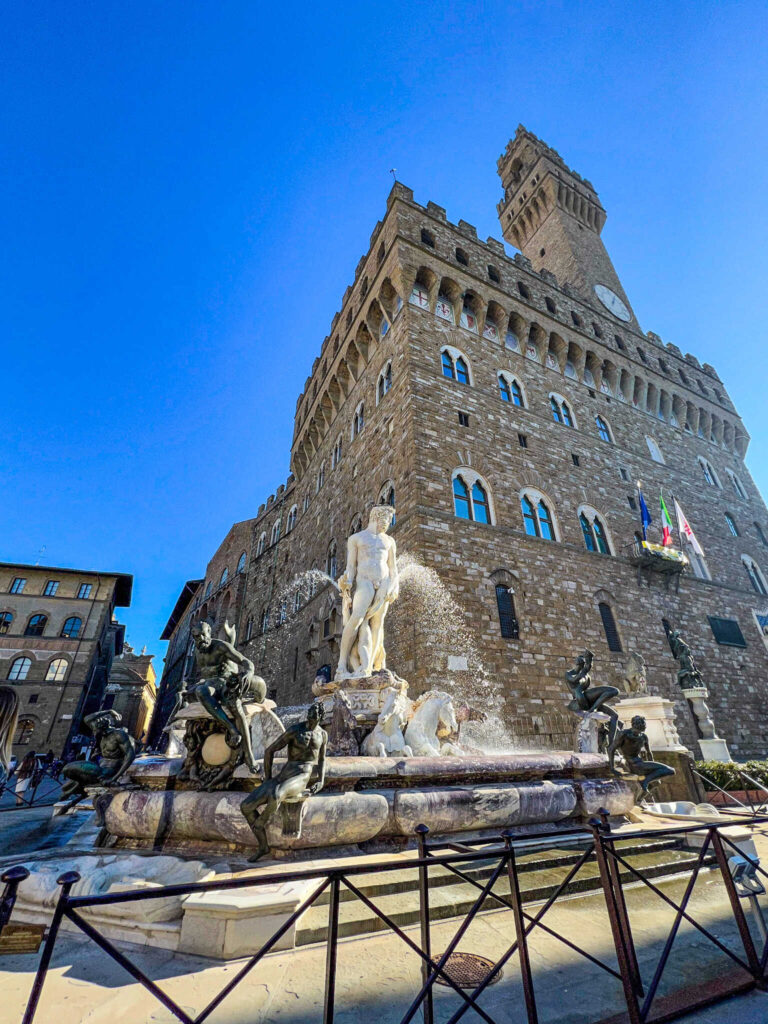
Florence, Italy, is a stunning city any time of year, but the best time to visit is the spring and fall.
During this time, visitors are treated to warm temperatures and longer days.
Since there are fewer tourists than during the summer months, you’ll have an easier time making impromptu reservations for restaurants and speedier entry into museums and monuments.
However, there’s nothing quite like Florence in the summer.
The historic game Calcio Storico Fiorentino is played at the start of summer in Piazza Santa Croce, followed by other outdoor festivals and concerts throughout the rest of the peak season.
And at night, its many restaurants and bars offer outdoor dining featuring a variety of traditional Florentine and modern Italian cuisine.
Best Time To Visit Amalfi Coast


For a truly captivating experience, the best time to visit the Amalfi Coast is during the late spring and summer months, from April to August.
Although the summer months are peak travel season, the days are longer, and the shoreline is drenched in sunlight, making it a perfect time to take in the breathtakingly beautiful Mediterranean views.
The temperatures are ideal for sightseeing and exploring the coastline, and swimming in the crystal-clear ocean will be irresistible on a hot summer day.
However, the best time to visit the Amalfi Coast is in November if you want to avoid crowds.
It’s a bit too cold to lay out on the beach, and some shops will be closed, but you’ll have the city streets almost entirely to yourself.
Weather in Italy
Italy has a diverse climate, ranging from the snow-capped Alps in the north to the sunny Mediterranean coast in the south.
The weather conditions in Italy can vary greatly depending on where you are and what time of year it is.
Winter in Italy

In winter, temperatures drop significantly across the country, especially in north Italy.
Up in Milan, temperatures can reach as low as -1°C (31°F) in January and February.
In the south, temperatures are milder, with average lows of around 9°C (48°F) in Sorrento and Palermo.
Spring in Italy

Spring is a beautiful time to visit Italy, with temperatures gradually warming up across the country.
The days become longer and sunnier, making it perfect for sightseeing and outdoor activities.
Average high temperatures range from 19°C (66°F) in March and April to 23°C (74°F) in May.
Summer in Italy

Summer is the peak tourist season in Italy, with temperatures soaring across the country.
In Rome or Florence, temperatures can reach as high as 31°C (88°F).
The Alps are a stunning setting for hiking and cycling in the summer months, with well-defined trails to follow and camping opportunities.
Small towns offer cafes, supplies, and other amenities along these trails, making it easy to explore this beautiful region.
I have a whole guide on some of the best places to visit in Italy in the summer.
Fall in Italy

Fall is another busy time to visit Italy, as the temperatures are still warm and the days are still long.
The temperature starts dropping from average highs around 26°C (79°F) to 14°C (58°F) by November.
Visiting Italy: FAQs
Since you’re looking for the ideal time to visit Italy and the best places to explore, here are some additional travel tips on making the most of your trip.
What is the cheapest month to go to Italy?

The cheapest month to visit Italy is typically November, when the tourist crowds have thinned out, and prices are lower.
This is a great time to explore some of Italy’s most famous cities and attractions without battling hordes of tourists.
Additionally, many restaurants and hotels offer discounts during this time of year, making it an ideal time for budget travelers.
What is peak tourist time in Italy?

The peak tourist time in Italy is typically during the summer months of June through August.
The weather is warm and sunny during this time, making it ideal for beach vacations and sightseeing.
However, this also means that major attractions are more crowded, and prices tend to be higher.
If you’re looking for a quieter experience with fewer crowds, consider visiting in the spring or fall months instead.
Or, take a look at my list of non-touristy places to explore in Italy to escape the crowds.
What are Italy’s hottest months?

Italy’s hottest months are typically July and August when temperatures reach upwards of 31°C (88°F).
During this time, Italy experiences a large influx of tourists, and prices may be higher due to the demand.
While the country’s beautiful beaches are popular destinations if you’re looking to cool off in the Mediterranean Sea, staying hydrated and taking breaks from the heat during your travels is essential.
Why Visit Italy?

From its rich history and culture to its stunning art and architecture, Italy is one of the top travel destinations.
The best time to visit Italy depends on what you’re looking for. Spring and autumn are ideal for warm temperatures, sunny days, and small crowds.
December to February is perfect for skiing trips in the Alps or Dolomites, while summer is great for sunbathing on the coasts of Tropea or Sicily.
But no matter when you choose to visit, you can be sure that Italy will provide an unforgettable experience with its dynamic cities, gorgeous countryside, and delicious cuisine.
Stunning nature and incredible views


The nickname Bel Paese, meaning “beautiful country,” perfectly encapsulates Italy’s natural beauty.
From the alpine lakes of the north to the snow-capped mountains of the south, the country is renowned for its diverse landscapes and natural beauty.
Foodies and wine connoisseurs will appreciate the abundance of dishes and wines to try, while nature lovers can explore the stunning scenery of the Alps or dip into one of the best hot springs in Italy.
Iconic art and architecture


Italy is a country with a rich history and culture, and its art and architecture are some of the most iconic in the world. From Leonardo da Vinci to Michelangelo, Italian artists, writers, and scholars have produced some of the greatest works in history.
All throughout the country’s museums, you have an opportunity to explore these relics and artworks at museums like Rome’s Borghese Gallery, Venice’s Gallerie dell’Accademia, Florence’s Uffizi Gallery, and the Sistine Chapel in the Vatican City to view these masterpieces.
Ancient ruins such as the Colosseum, Arch of Constantine, and Pompeii provide a glimpse into Italy’s past.
Best Time To Visit Italy: Wrap-Up
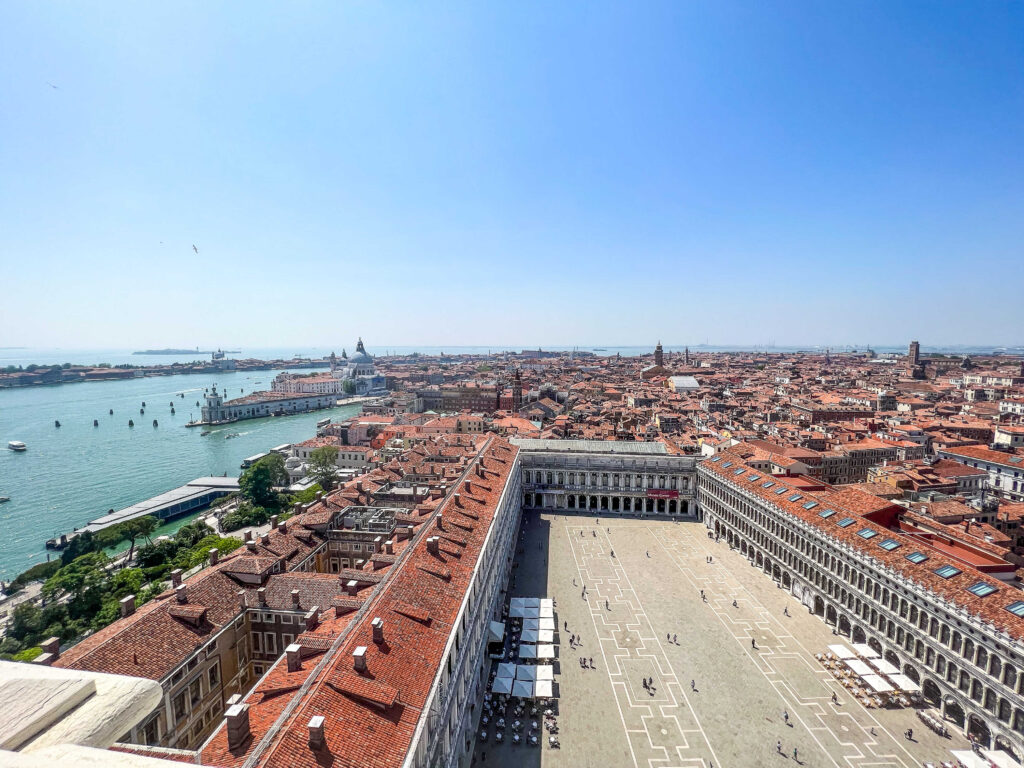
No matter when you choose to visit Italy, you’re sure to have an unforgettable experience.
Whether you’re looking for a beach vacation, a cultural experience, or a chance to explore the country’s stunning cities and countryside, with careful planning and research, you can find the best time to visit Italy that suits your needs and budget.
Read More
- 20+ Things I Wish I’d Known Before Moving To Rome, Italy
- Your Complete Guide to Wheelchair-Accessible Italy
- The Art of Riposo: Siesta in Italy
- A Quick Guide to the Drinking Laws in Italy
- Venice vs Rome: Which Italian City Should You Visit?

